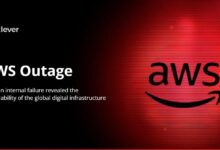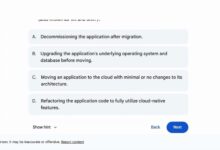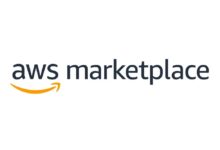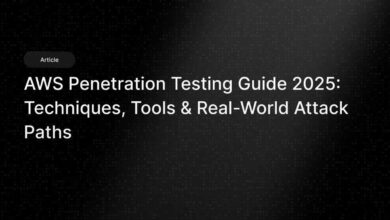AWS Marketplace: 7 Powerful Benefits You Can’t Ignore
Looking to scale your cloud solutions fast? AWS Marketplace is your ultimate gateway to ready-to-use software, trusted vendors, and seamless deployment—all within the AWS ecosystem. Discover how it transforms how businesses buy, sell, and deploy technology.
What Is AWS Marketplace and How Does It Work?

AWS Marketplace is a curated digital catalog that enables customers to find, buy, deploy, and manage third-party software, data, and services that run on Amazon Web Services (AWS). It simplifies the procurement and deployment of cloud-based solutions by offering a centralized platform where software vendors can list their products, and customers can access them with just a few clicks.
A Digital Storefront for Cloud Software
Think of AWS Marketplace as the Amazon.com for cloud software. Just as you browse and purchase physical goods on Amazon, AWS Marketplace allows organizations to discover software solutions—from security tools to machine learning platforms—tailored for AWS environments.
- Over 10,000 products available as of 2024
- Products are categorized by use case, industry, and deployment method
- Seamless integration with AWS accounts and billing
Unlike traditional software procurement, which can involve lengthy negotiations and complex licensing, AWS Marketplace streamlines the process. You can start using software immediately after selection, with pricing often transparent and usage-based.
How AWS Marketplace Fits Into the AWS Ecosystem
AWS Marketplace is deeply integrated into the broader AWS ecosystem. When you deploy a product from the marketplace, it runs on AWS infrastructure—EC2 instances, Lambda functions, containers, or S3 storage—depending on the software’s architecture.
This tight integration means users benefit from AWS’s scalability, security, and global reach without needing to manage external hosting or compatibility issues. Additionally, usage is tracked through AWS Cost Explorer, making it easier to monitor and optimize spending.
“AWS Marketplace reduces time-to-value for software deployment from weeks to minutes.” — AWS Official Documentation
Key Benefits of Using AWS Marketplace
Organizations of all sizes—from startups to Fortune 500 companies—leverage AWS Marketplace to accelerate innovation, reduce operational overhead, and improve procurement efficiency. Let’s explore the most impactful advantages.
Accelerated Deployment and Time-to-Value
One of the standout benefits of AWS Marketplace is how quickly you can get software up and running. Instead of going through weeks of installation, configuration, and testing, many solutions are available as pre-configured Amazon Machine Images (AMIs) or container images.
- Deploy a firewall, database, or analytics tool in under 10 minutes
- No need to download installers or manage license keys manually
- Automated integration with IAM, VPC, and other AWS services
This speed is critical for DevOps teams, startups in rapid iteration mode, and enterprises responding to urgent security or compliance needs.
Simplified Procurement and Billing
Traditional software procurement often involves multiple departments: IT, legal, finance, and procurement. AWS Marketplace simplifies this by allowing purchases directly through your AWS account, with costs rolled into your monthly AWS bill.
This eliminates purchase orders, invoicing delays, and reconciliation headaches. For finance teams, it means better visibility into software spend. For IT, it means faster access to tools without waiting for budget approvals.
Additionally, AWS Marketplace supports various pricing models, including:
- Pay-as-you-go (hourly or per-second billing)
- Annual subscriptions
- Free trials and freemium models
- Bring-your-own-license (BYOL) options
Trusted and Verified Software Providers
Every vendor on AWS Marketplace undergoes a vetting process by AWS. This includes technical validation, security assessments, and compliance checks. As a result, customers can trust that the software they’re deploying meets AWS’s high standards.
Moreover, AWS Marketplace displays customer reviews, ratings, and usage statistics, helping buyers make informed decisions. You’ll also find badges like “AWS Qualified” or “AWS Marketplace Featured,” which indicate products that have passed additional testing or are promoted by AWS.
How to Buy Software on AWS Marketplace
Purchasing software on AWS Marketplace is designed to be intuitive, even for non-technical users. Whether you’re a developer, IT manager, or procurement officer, the process is straightforward and secure.
Step-by-Step Guide to Purchasing a Product
Here’s how to buy and deploy a software product from AWS Marketplace:
Search or browse: Use the AWS Marketplace website to search for a specific tool (e.g., “Palo Alto VM-Series”) or explore categories like AI/ML, DevOps, or Security.Review product details: Check pricing, customer reviews, technical specs, and deployment options.Look for compliance certifications (e.g., HIPAA, SOC 2) if relevant.Choose a deployment option: Some products offer multiple versions—e.g., free trial, hourly paid, or annual subscription..
Click “Continue to Subscribe”: This initiates the agreement with the vendor.Accept terms and deploy: After accepting the software terms, you’ll be redirected to the AWS Console to launch the product into your VPC, EC2, or ECS environment.Monitor usage and costs: Track consumption via AWS Cost Explorer or Budgets.The entire process typically takes less than 15 minutes from search to deployment..
Understanding Pricing Models and Licensing
AWS Marketplace supports several pricing models, each suited to different use cases:
- Hourly/Per-Second Billing: Ideal for variable workloads or testing. You pay only when the instance is running.
- Annual Subscription: Best for stable, long-term usage. Often offers a discount over hourly rates.
- Free Tier or Trial: Many vendors offer limited-time free access to test functionality.
- Bring Your Own License (BYOL): For software where you already own a license (e.g., Microsoft SQL Server, Oracle).
Licensing is managed automatically in most cases. For example, if you deploy a licensed firewall, the license is tied to your AWS account and instance ID, eliminating manual activation.
Integration with AWS Organizations and Control Tower
For enterprises managing multiple AWS accounts, AWS Marketplace integrates seamlessly with AWS Organizations and AWS Control Tower. This allows centralized governance over software purchases across departments or subsidiaries.
Administrators can:
- Set spending limits on marketplace purchases
- Approve or block specific products
- Enforce compliance policies (e.g., only approved vendors)
- Consolidate billing across accounts
This level of control is essential for large organizations aiming to prevent shadow IT and maintain financial oversight.
Selling on AWS Marketplace: A Guide for Vendors
AWS Marketplace isn’t just for buyers—it’s a powerful channel for software vendors to reach millions of AWS customers globally. Whether you’re a startup or an enterprise software provider, listing your product can significantly boost visibility and sales.
Why Vendors Should List on AWS Marketplace
For software companies, AWS Marketplace offers several strategic advantages:
- Access to a massive customer base: Over 1 million active customers use AWS Marketplace.
- Reduced sales friction: Customers can try and buy without lengthy negotiations.
- Global reach: Your product is available in all AWS regions and languages.
- Trusted platform: Being on AWS Marketplace adds credibility and trust.
- Integrated billing: AWS handles invoicing and payments, reducing administrative overhead.
According to AWS, vendors who list on the marketplace see an average 3x increase in lead conversion compared to traditional sales channels.
Steps to Publish a Product on AWS Marketplace
To list your software, follow these key steps:
- Enroll in AWS Marketplace: Register as a seller via the AWS Marketplace Seller Portal.
- Choose your product type: Decide whether you’re offering software as an AMI, container, SaaS, or data product.
- Prepare your product: Ensure it meets AWS technical and security requirements. This includes creating launch templates, documentation, and support plans.
- Submit for review: AWS will validate your product for compatibility, security, and compliance.
- Set pricing and terms: Define your pricing model and customer agreement.
- Launch and promote: Once approved, your product goes live and becomes searchable.
The entire process can take 4–8 weeks, depending on complexity and review cycles.
Pricing, Revenue Share, and Support Requirements
AWS takes a revenue share from each transaction, typically ranging from 3% to 20%, depending on the product type:
- AMI and container products: 3% fee
- SaaS products: 20% fee
- Data products: 15% fee
Vendors are responsible for providing customer support, though AWS provides tools to manage subscriptions and usage. You must also maintain uptime, update documentation, and respond to customer inquiries promptly.
Many vendors pair their AWS Marketplace presence with co-sell opportunities through the AWS Partner Network (APN), allowing AWS sales teams to actively promote their solutions.
AWS Marketplace vs. Traditional Software Procurement
To truly appreciate the value of AWS Marketplace, it helps to compare it with traditional software buying methods. The differences are stark in terms of speed, cost, and operational efficiency.
Speed of Deployment: Minutes vs. Weeks
In traditional procurement, acquiring new software can take weeks or even months. It involves:
- Requesting quotes from vendors
- Negotiating contracts and SLAs
- Obtaining budget approval
- Installing and configuring on-premises or cloud infrastructure
- Testing and user training
In contrast, AWS Marketplace cuts this down to minutes. A developer can find, subscribe to, and launch a database monitoring tool during a single work session—without involving procurement or finance.
Cost Transparency and Predictability
Traditional software often comes with hidden costs: maintenance fees, upgrade charges, or unexpected licensing restrictions. With AWS Marketplace, pricing is upfront and usage-based.
You can easily compare hourly rates, set budget alerts, and shut down instances when not in use. This pay-as-you-go model aligns costs directly with value, making it easier to justify software spend.
Security and Compliance at Scale
Security is a major concern in traditional software deployment. You must verify the vendor’s security posture, manage patching, and ensure compliance with regulations like GDPR or HIPAA.
AWS Marketplace mitigates these risks by:
- Requiring vendors to meet AWS security standards
- Providing built-in encryption and IAM integration
- Offering compliance-ready solutions (e.g., HIPAA-eligible, FedRAMP)
- Allowing audit trails via AWS CloudTrail
This reduces the burden on internal security teams and accelerates compliance efforts.
Use Cases and Real-World Examples of AWS Marketplace
AWS Marketplace is used across industries and functions. From cybersecurity to data analytics, organizations leverage it to solve real business challenges quickly and efficiently.
Security and Compliance Solutions
Many companies use AWS Marketplace to deploy security tools like firewalls, intrusion detection systems, and vulnerability scanners.
- Palo Alto Networks VM-Series: A virtual next-gen firewall available on AWS Marketplace for protecting VPCs.
- Trend Micro Deep Security: Provides workload protection for EC2 instances.
- Fortinet FortiGate: Offers secure SD-WAN and firewall capabilities.
These tools can be deployed in minutes, providing immediate protection for cloud environments.
Data Analytics and AI/ML Tools
Data scientists and analysts use AWS Marketplace to access pre-built machine learning models and analytics platforms.
- Matillion ETL: A data integration tool for transforming data in Redshift and Snowflake.
- DataRobot: An automated machine learning platform that helps build predictive models.
- Looker (now part of Google Cloud): Offers BI and data visualization, deployable on AWS.
These tools reduce the need for custom development and accelerate time-to-insight.
DevOps and Infrastructure Management
DevOps teams rely on AWS Marketplace for tools that automate infrastructure, monitor performance, and manage configurations.
- Datadog: Full-stack monitoring for AWS environments.
- HashiCorp Terraform: Available as a pre-configured AMI for infrastructure-as-code deployments.
- PagerDuty: Incident response and alerting, integrated with AWS CloudWatch.
By using these tools from the marketplace, teams maintain consistency and reduce setup time.
Best Practices for Maximizing AWS Marketplace
To get the most out of AWS Marketplace, both buyers and sellers should follow proven best practices. These help optimize costs, ensure security, and improve overall experience.
For Buyers: How to Optimize Your Usage
Here are key tips for organizations using AWS Marketplace:
- Use AWS Budgets: Set alerts for marketplace spending to avoid surprise bills.
- Leverage Free Trials: Test products before committing to paid plans.
- Review Customer Ratings: Look for products with high ratings and active vendor support.
- Monitor Unused Instances: Shut down AMIs or SaaS subscriptions you’re no longer using.
- Use AWS Marketplace with AWS Launch Wizard: For complex applications like SAP or SQL Server, Launch Wizard automates deployment.
For Sellers: Strategies to Increase Visibility and Sales
If you’re a vendor, consider these strategies to stand out:
- Offer a Free Trial: Reduces friction for first-time users.
- Optimize Your Product Listing: Use clear titles, detailed descriptions, and high-quality screenshots.
- Participate in AWS Co-Sell Programs: Get your product promoted by AWS sales teams.
- Gather Customer Reviews: Positive feedback boosts credibility.
- Update Regularly: Keep your product current with the latest AWS features.
Integrating AWS Marketplace with CI/CD Pipelines
Advanced users can automate the deployment of marketplace software using Infrastructure as Code (IaC) tools like AWS CloudFormation or Terraform.
For example, you can write a CloudFormation template that automatically deploys a marketplace-approved security agent on every new EC2 instance. This ensures consistency, reduces manual errors, and enforces security policies at scale.
Future Trends and Innovations in AWS Marketplace
AWS Marketplace is continuously evolving. As cloud adoption grows, so does the marketplace’s role in shaping how software is delivered and consumed.
Growth of SaaS and Subscription Models
The shift from perpetual licenses to SaaS is accelerating. AWS Marketplace is adapting by making it easier to list and consume SaaS products. Unlike AMIs, SaaS offerings are delivered as turnkey services with no infrastructure to manage.
AWS now supports SaaS contract management, metering, and usage-based billing through the AWS Marketplace for SaaS platform. This is a game-changer for ISVs looking to monetize their applications.
AI and Machine Learning Integration
AI is becoming a core part of the marketplace. Vendors now offer pre-trained models for fraud detection, sentiment analysis, and image recognition—all deployable with a few clicks.
AWS is also enhancing discovery with AI-driven recommendations. Based on your usage patterns, AWS Marketplace can suggest relevant tools, improving the buyer experience.
Global Expansion and Localization
AWS Marketplace is expanding into new regions and supporting more languages, currencies, and compliance frameworks. This makes it easier for vendors to reach international customers and for buyers to access region-specific solutions.
For example, vendors in Europe can now list GDPR-compliant products with localized pricing in EUR, while Asian customers can find solutions tailored to local regulations like China’s Cybersecurity Law.
What is AWS Marketplace?
AWS Marketplace is a digital catalog that allows customers to discover, purchase, and deploy third-party software and services that run on AWS. It includes AMIs, containers, SaaS, and data products from vetted vendors.
Is AWS Marketplace free to use?
Yes, browsing and subscribing to products is free. However, you pay for the software usage (hourly, monthly, or annual) and associated AWS resource costs (e.g., EC2 instances).
Can I sell my software on AWS Marketplace?
Yes, software vendors can list their products by enrolling in the AWS Marketplace Seller Program. AWS provides tools for onboarding, billing, and customer management.
How does billing work on AWS Marketplace?
Billing is integrated into your AWS account. Software costs are added to your monthly AWS bill, and you can track spending via Cost Explorer or Budgets.
Are there security risks in using AWS Marketplace?
AWS vets all vendors and products for security and compliance. However, users should still follow best practices like least-privilege IAM roles and regular patching to minimize risks.
AWS Marketplace has revolutionized how organizations access and deploy cloud software. By combining speed, trust, and integration, it empowers businesses to innovate faster and scale smarter. Whether you’re a buyer looking for a quick solution or a vendor aiming to reach millions, AWS Marketplace offers a powerful, streamlined platform. As cloud adoption continues to grow, its role as a central hub for software delivery will only become more critical. Start exploring today—and unlock the full potential of the AWS ecosystem.
Recommended for you 👇
Further Reading:









